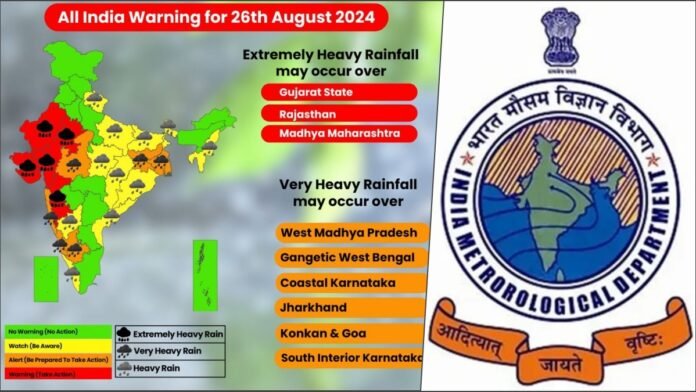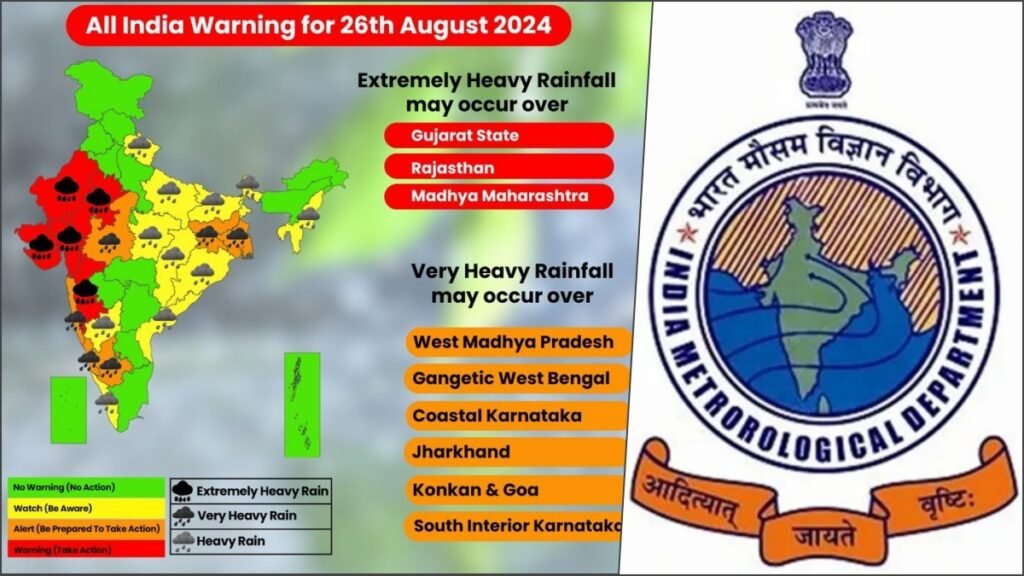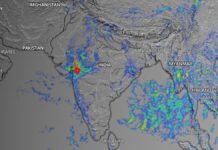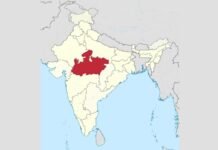
New Delhi: The Meteorological Department of India has raised the alarm as heavy to very heavy rains loom over several states, including Madhya Pradesh, Rajasthan, Gujarat, Goa, and Maharashtra. Climate scientists attribute the severity of these downpours to human-caused climate change, emphasizing that such extreme weather events are becoming more frequent.
Key Points:
- Red Alert for Madhya Pradesh: The pressure area that formed over northwestern Madhya Pradesh and adjoining eastern Rajasthan has intensified into a high-pressure system. As a result, the Indian Meteorological Department (IMD) has issued a ‘Red Alert’ for Madhya Pradesh, warning of heavy to very heavy rainfall in the coming days.
- Impact on Other States: The same weather system is expected to affect other regions. Southern Rajasthan, Gujarat (including Saurashtra and Kutch), and parts of Goa and Maharashtra are also at risk of heavy rains. The IMD predicts that this pattern will persist until August 29.
- Low-Pressure Area Over Gangetic Plains: Simultaneously, a low-pressure area has formed over Bangladesh and the Gangetic Plains of West Bengal. It is likely to intensify further, posing a threat to West Bengal, northern Odisha, and Jharkhand. The IMD has issued a ‘red alert’ for West Madhya Pradesh on August 26 and similar conditions for eastern and southern Rajasthan.
- Strong Winds and Rough Seas: Along the Gujarat coast, adjoining Pakistan, and northern Maharashtra, strong winds with speeds reaching 55 kmph are anticipated on August 26, gusting to 60 kmph on August 27 and 28. The sea conditions will remain rough along these coasts until August 30. Additionally, the northern Bay of Bengal is expected to experience rough seas on August 26.
- Urban Flooding and Landslide Risks: The IMD advises fishermen to avoid venturing into the Arabian Sea and Bay of Bengal, especially near the coasts of Gujarat, Pakistan, and Maharashtra. Urban areas face the risk of flooding, road closures, and waterlogging. There is also concern about landslides and potential damage to horticultural crops.

India’s monsoon patterns have become increasingly erratic due to climate change, emphasizing the urgent need for global efforts to transition from fossil fuels to renewable energy sources. As extreme weather events continue to unfold, authorities and communities must remain vigilant and take necessary precautions.
Advertisement





















































